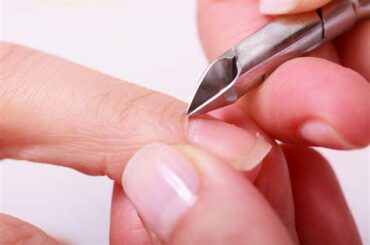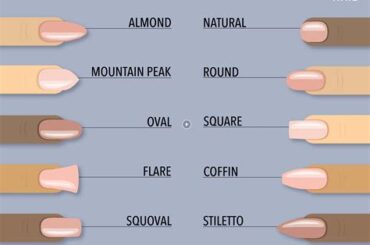Learn all about nail stamping, from choosing the right tools to perfecting the technique. Avoid common mistakes and add finishing touches for stunning results.
What is Nail Stamping?
Nail stamping is a popular nail art technique that involves using a metal plate with engraved designs to transfer the pattern onto the nails. This method allows for intricate and detailed designs that would be difficult to achieve with traditional nail polish and brushes.
Stamping tools include a stamping plate, a stamper, and a scraper. The stamping plate is engraved with various designs, the stamper is used to pick up the design from the plate, and the scraper is used to remove excess polish from the plate.
Many nail art enthusiasts appreciate nail stamping for its ease of use and the ability to create professional-looking designs at home. The process involves applying nail polish to the desired design on the plate, scraping off the excess polish, picking up the design with the stamper, and transferring it onto the nail. With practice, nail stamping can be a fun and creative way to express yourself through nail art.
Choosing the Right Stamping Tools
When it comes to nail stamping, selecting the right tools is crucial for achieving perfect results. The first tool you’ll need is a good quality stamper. Look for one with a soft, squishy head that will easily transfer the design onto your nails. Additionally, consider the size of the stamper head – it should be large enough to accommodate different nail sizes. It’s also important to choose stamping plates with well-etched designs, as this will ensure a clean transfer onto your nails.
Next, you’ll need a scraper to remove excess polish from the stamping plate. A plastic scraper is ideal, as it won’t scratch or damage the surface of your stamping plates. Additionally, having a selection of nail polishes with varying viscosities is essential for successful nail stamping. Thicker, highly pigmented polishes tend to work best for stamping, as they provide strong, opaque coverage.
Lastly, make sure to have a bottle of nail polish remover and some cotton pads on hand, as clean-up is often necessary when stamping. With the right tools in your arsenal, you’ll be well-equipped to master the art of nail stamping.
Preparing Your Nails for Stamping
Preparing Your Nails for Stamping
Before you start nail stamping, it’s important to properly prepare your nails to ensure a flawless and long-lasting design. The first step in preparing your nails for stamping is to remove any old nail polish using a gentle nail polish remover. Make sure to thoroughly clean your nails and remove any oils or residues to create a smooth base for the stamping process.
Next, you’ll want to shape and file your nails to your desired length and shape. This will help create a clean canvas for your stamping design and ensure that the finished result looks polished and professional.
After shaping and filing your nails, it’s important to apply a base coat of nail polish. This will help protect your nails from staining and provide a smooth surface for stamping. Allow the base coat to dry completely before moving on to the stamping process.
Selecting the Perfect Nail Polish
Beginner's Guide to Nail Stamping: Step by Step
Choosing the right nail polish is essential for a successful nail stamping process. It’s important to select a polish that is highly pigmented and opaque, as these qualities will ensure a crisp and clear stamped design. Look for polishes that are specifically labeled as stamping polish as they are formulated to work well with stamping tools and techniques. Additionally, consider the color of the polish and how it will complement the design you plan to stamp onto your nails.
When selecting a nail polish for stamping, it’s also important to consider the consistency of the formula. A polish that is too thin or runny may not transfer onto the stamping plate effectively, resulting in a blurry or incomplete design. On the other hand, a polish that is too thick or gloopy can make it difficult to achieve a clean transfer onto the nail. Look for polishes that have a smooth and creamy consistency, as these are often best suited for stamping.
Lastly, it’s important to consider the drying time of the nail polish. Opt for polishes that dry relatively quickly, as this will help to minimize the risk of smudging or smearing the stamped design. Some stampers even recommend using a quick-dry top coat over the stamped design to further ensure its longevity and to speed up the drying process. By carefully selecting the perfect nail polish for stamping, you can set yourself up for success and achieve professional-looking nail art at home.
Step-by-Step Stamping Technique
Nail stamping is a fun and creative way to decorate your nails with intricate designs. It involves using stamping plates that have various designs etched into them, along with a stamper and scraper to transfer the designs onto your nails. The step-by-step stamping technique requires precision and patience to achieve flawless results.
Before you begin stamping, it’s important to start with clean and dry nails. Apply a base coat to protect your nails and help the design adhere better. Once your base coat is dry, select a nail polish color to use as your base. Once your base color is dry, it’s time to move on to the stamping process.
Choose a stamping plate with a design that you like, and apply a generous amount of nail polish over the design. Then, use the scraper to remove the excess polish and press the stamper onto the plate to pick up the design. Carefully transfer the design onto your nail by rolling the stamper over the nail. Seal in your design with a top coat to protect it and give it a glossy finish.
Tips for Perfect Stamped Nails
When it comes to achieving flawless stamped nails, there are a few key tips to keep in mind. First and foremost, it’s important to use the right type of nail polish for stamping. Look for thick, highly pigmented polishes specifically designed for nail art, as these will provide the best results. Additionally, make sure your stamping tools are clean and in good condition to ensure crisp, clean designs.
Another important tip for perfect stamped nails is to work quickly when using the stamping technique. Apply the polish to the stamping plate and transfer the design to your nail in one swift motion to avoid smudging or blurring. It’s also crucial to choose the right image size for your nail – too small and the design may be lost, too large and it won’t fit properly.
Finally, once you’ve stamped your nails, be sure to seal and protect the design with a high-quality top coat. This will help prevent chipping and extend the life of your stamped nail art. Following these tips will help you achieve professional-looking stamped nails at home with ease.
Common Mistakes to Avoid
One common mistake to avoid when nail stamping is using the wrong kind of polish. It is important to use nail polish that is specifically designed for stamping in order to achieve the best results. Regular nail polish may not transfer well onto the stamping tool, leading to a messy and incomplete design on the nails.
Another mistake to avoid is not cleaning the stamping plates properly. Before each use, it is crucial to thoroughly clean the stamping plates with acetone or nail polish remover to remove any residue from previous designs. Failing to do so can result in smudged and distorted images on the nails.
Lastly, a common mistake to avoid is not applying enough pressure when stamping the design onto the nails. In order to achieve a clean and crisp transfer, it is essential to firmly and evenly press the stamping tool onto the nail. Applying too much or too little pressure can result in an uneven and inconsistent design.
Adding Finishing Touches
Once you have completed the stamping process and have achieved the perfect design on your nails, it’s time to add the finishing touches to complete the look. One important step is to clean up any excess nail polish that may have gotten on your skin or cuticles during the stamping process. You can use a small brush dipped in nail polish remover to carefully clean up any mistakes and achieve a clean and polished look.
After cleaning up any stray polish, you can also add some extra flair to your stamped design by applying small embellishments, such as rhinestones, studs, or glitter. These can be carefully placed on top of the stamped design using a small amount of nail glue. This will give your nail art some extra dimension and make it stand out even more.
Finally, to ensure that your stamped design lasts as long as possible, be sure to apply a layer of top coat over the entire nail. This will seal in your stamped design and protect it from chipping. Additionally, using a top coat with a glossy finish can help enhance the overall look of your nail art, giving it a professional and polished appearance.
Sealing and Protecting Your Stamped Design
Once you’ve completed your intricate nail stamping design, the next crucial step is sealing and protecting it. Sealing your design will ensure that it stays in place and doesn’t chip or fade easily. For this, you can use a high-quality clear top coat that is specifically designed for nail art. Make sure to apply a generous amount of top coat over your stamped design, covering the entire nail for maximum protection.
After applying the top coat, it’s important to let your nails completely dry before moving on to any other activities. This will prevent any smudging or smearing of your design. You can use a quick-dry top coat if you’re in a hurry, but allowing ample drying time is essential for long-lasting results.
Protecting your stamped design also means taking care of your nails on a daily basis. Avoid using your nails as tools or exposing them to harsh chemicals that can damage the top coat. It’s a good idea to wear gloves when doing chores or using cleaning products to protect your nails from unnecessary wear and tear. With proper sealing and protection, your stamped design can stay vibrant and intact for an extended period of time.
Frequently Asked Questions
What is nail stamping?
Nail stamping is a technique where an image or design is transferred onto the nails using a stamp and scraper.
What tools do I need for nail stamping?
You will need a stamper, scraper, nail polish, and nail stamping plates with different designs.
How do I prepare my nails for stamping?
Start by applying a base coat to protect your natural nails. Then, apply a solid-colored nail polish as a base for stamping.
How do I use a nail stamping plate?
Apply a generous amount of nail polish onto the design you want to use. Then, use the scraper to remove the excess polish and pick up the design with the stamper. Finally, transfer the design onto your nail by gently pressing the stamper.
How do I clean my stamping plates?
You can clean your nail stamping plates with nail polish remover or a gentle nail plate cleaner. Make sure to dry them thoroughly before using them again.
How can I fix mistakes while stamping?
If you make a mistake, you can use a cotton swab dipped in nail polish remover to clean up the design. You can also use a fine brush dipped in nail polish to touch up any smudges or missing spots.
Can I use regular nail polish for stamping?
You can use regular nail polish for stamping, but some formulas may not work as well as dedicated stamping polish. If you’re having trouble, consider using a stamping polish for better results.





